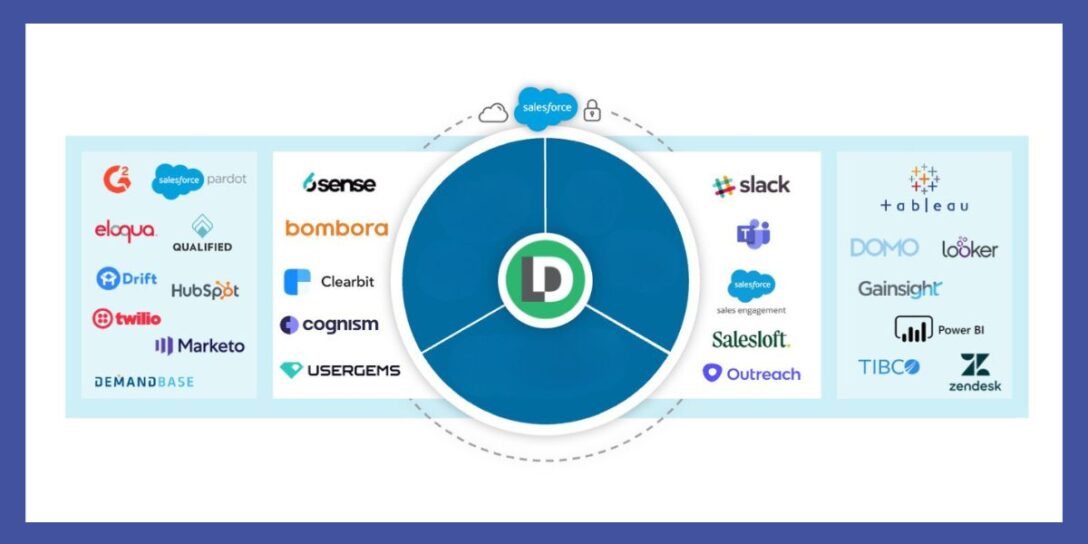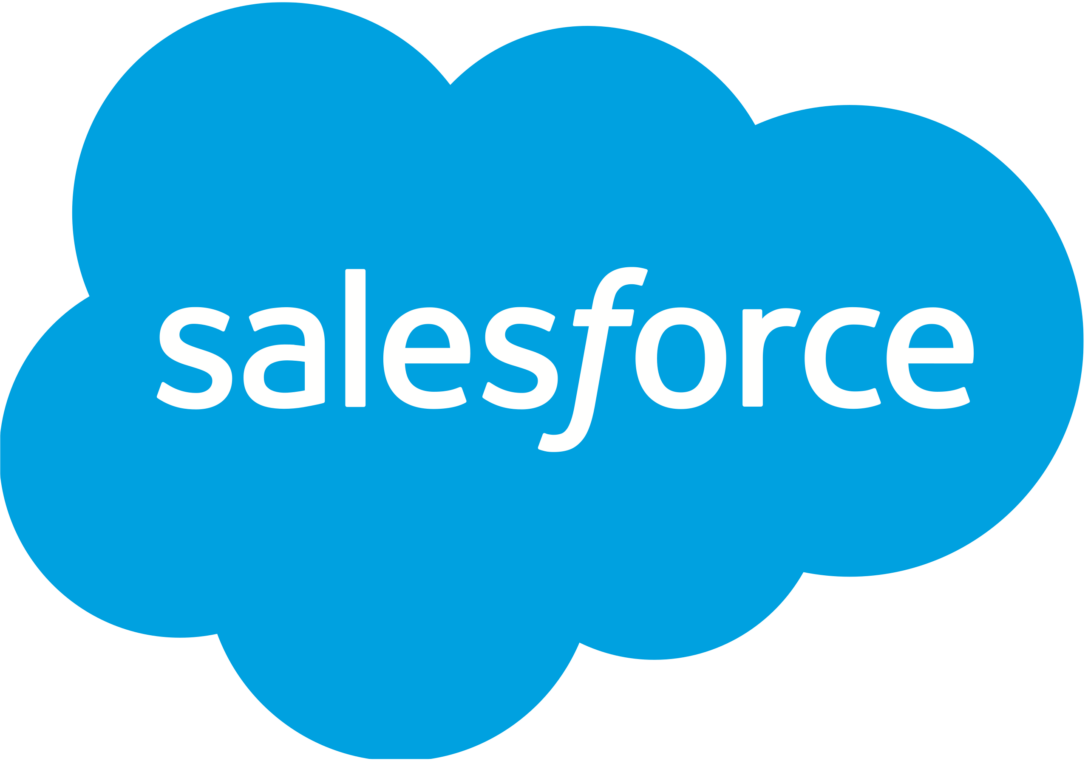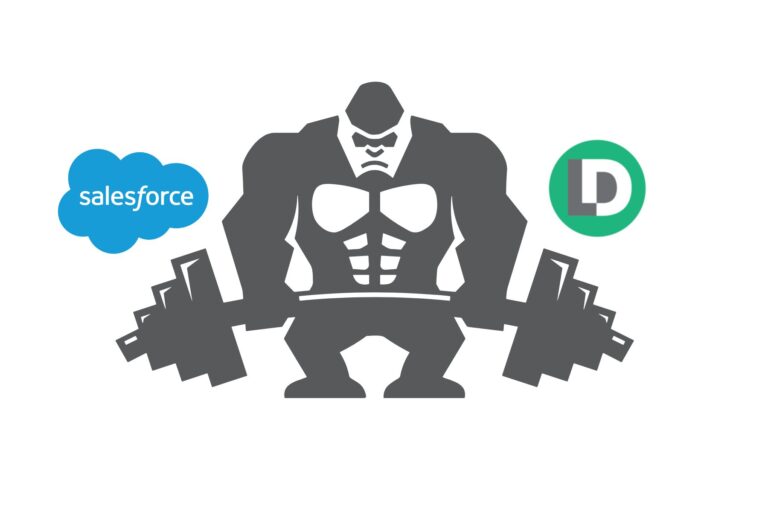Want to grow sales and close more deals?
The way a business handles leads makes a big difference. In fact, lead management can make or break revenue growth in today’s fast-paced digital buying journeys.
But unfortunately, many B2B organizations struggle with:
- Slow follow-ups that make leads lose interest
- Messy data that confuses sales teams
- Poor communication between marketing and sales
- Lost leads that never get a response
This reality is reflected in Salesforce’s latest State of Sales report, showing growing challenges with inaccurate/incomplete data and long sales cycles.
Fortunately, the right lead management software fixes these problems. It tracks leads, organizes follow-ups, and makes sure sales teams focus on the best opportunities.
In order to choose the best lead management software, this guide will explain:
- What lead management software is and how it has changed over time.
- Why managing leads is important for sales success.
- The main features enterprise organizations should look for.
- The best lead management software options.
- How companies can make the best choice for their business.

What is Lead Management Software?
Lead management software helps keep track of potential customers from first contact to final sale. To illustrate, it makes sure no lead is lost, automates key tasks like follow-up, and helps sales teams focus on the best opportunities.
Historically, before lead management software, sales teams manually recorded contact and other basic details to manage leads.
Now, software can score leads, send follow-ups automatically, and connect with other sales tools. Working seamlessly with CRMs, marketing tools, and AI analytics makes this software a powerful sales enabler.
Moreover, it improves sales efforts and conversions by helping teams personalize outreach and focus on the best leads.

Why Lead Management Matters in Sales
Without a strong way to manage leads, leads get lost, sales teams waste time, and deals fall through. Lead management software helps businesses focus on the best leads and close deals faster.
Here’s how LeanData’s lead management software has helped real companies:
- Bitrise made lead routing and meeting scheduling easier
- Everbridge improved the buying process
- F5 helped sales respond faster to leads
Key Features of Enterprise Lead Management Software
Quality lead management software saves time, reduces mistakes, and helps teams sell more. This happens when the right features work together to simplify tasks, improve efficiency, and speed up sales growth. Thus, knowing which features matter makes it easier to pick the best lead management software.
Here’s what the best lead management software should do:
Lead Capture & Tracking
Whenever someone fills out a form, downloads something, or starts a chat, lead management software saves their info. This helps sales teams see who’s interested and when to follow up.
Key ways to capture leads include landing pages, web forms, chatbots, conversational AI, webinars, gated content, and automated meeting scheduling tools. CRM systems like Salesforce, HubSpot, and Microsoft Dynamics make lead tracking easier by centralizing all interactions, relationships, and data.
Lead Nurturing & Automation
Not all leads are ready to buy. Nevertheless, good lead management software keeps them engaged until they are. Automation helps by engaging promising prospects at the right time. For example, automated emails share relevant content based on prospect actions, while AI chatbots engage with leads in real time.
Automation features include:
- Email marketing sequences
- Content personalization
- Targeted ABM campaigns
Lead Qualification & Scoring
Lead management software helps facilitate lead qualification and scoring processes. This way, sales teams focus on the most promising prospects. Qualification sorts leads based on their fit and likelihood to purchase. On the other hand, scoring assigns points based on specific behaviors and traits. Subsequently, sales knows where to spend their time for the best results.

The following are two common scoring models:
Weighted: This straightforward method assigns points based on select factors like engagement, intent, company size, and technology use.
Businesses can adjust point values as priorities change to make sure they always focus on the most favorable leads. Once a lead reaches a set score, it moves up the priority list.
Tiered: This more advanced approach groups leads based on fit and buying signals. Sales teams can zero in on top-tier prospects first, while marketing adjusts nurturing efforts based on each tier’s needs.

Both methods help teams work smarter by ensuring the right leads get the right attention at the right time.
Sales Pipeline Management
As leads move from first contact to a sale, a structured process makes sure deals progress, leads move through each step smoothly, and deals close faster. Lead management software simplifies this by automating follow-ups, scheduling meetings, and tracking progress through sales pipeline stages:
- Lead Generation: After a lead has been generated, the software kicks in. It helps by automatically gathering leads, deduping, enrichment, organizing all lead information in one place, and sorting leads into groups.
- Lead Qualification: Once organizations make sure leads are in market and a good fit for their product, lead management software ensures they smartly focus efforts. Automatically scoring leads based on interest and behavior, it shows which ones are most likely to buy.
- Initial Outreach: When businesses start talking to qualified leads, the software helps in multiple ways. It sends personalized emails, keeps track of all conversations, and reminds sales when to follow up.
- Nurturing: Lead management software keeps leads interested by sending them useful information. It makes it easy to set up campaigns that send the right content at the right time, and tracks how leads respond.
- Proposal/Negotiation: Come deal time, the software stores templates and winning proposals, tracks changes in the deal, and automatically follows up as needed.
- Closing: To assist with closing, the software automatically creates a contract, tracks deal win rates, and streamlines the handoff to customer success.
Reporting & Analytics
Reporting and analytics give a view into the impact of marketing and sales. This includes insight into results of marketing campaigns, how fast teams respond to leads, and how many leads turn into sales. By monitoring these results, organizations can do more of what’s working and drop what doesn’t.
Lead management software can track KPIs such as:
- Lead conversion rates
- Average response time
- Meetings booked
- Cost per lead
- Customer acquisition cost
- Lead source performance
- Service Level Agreements (SLAs)

Top Enterprise Lead Management Software Options
Some lead management platforms focus on automating lead routing, scoring, and qualification, making it easier to assign leads to the right salespeople. Others offer features like data cleansing, lead matching, and integrations with other systems to improve lead quality and team collaboration.
Many tools enable customizable workflows and provide dashboards to track lead progress, while some focus on various businesses sizes and industries. Here are a few popular options:
#1 LeanData

LeanData helps teams efficiently manage their leads, contacts, accounts and opportunities in Salesforce. As an intelligent go-to-market execution platform (and Salesforce-native), LeanData connects all parts of the sales process.
It can automatically direct leads to the right salesperson based on factors like location or lead score. It also matches leads to accounts using six fields and custom tiebreakers, not just basic information like email addresses.
LeanData’s BookIt scheduling tools help sales teams schedule meetings directly in Salesforce, saving time. LeanData even helps sales and marketing teams work together to manage leads and opportunities across a buying group. Plus, it provides audit capabilities, so teams can quickly spot and fix problems.
Sample customers benefiting from LeanData:
- Palo Alto Networks boosted revenue by 15%
- Zendesk reduced lead response time by 82%
- Toast doubled conversion rates
#2 Salesforce Sales Cloud

Salesforce makes it easy to manage leads with a single platform to track and store lead data. Through Salesforce Flows and Orchestrator, it has the ability to automate tasks like capturing leads, qualifying and nurturing them, and turning leads into customers. Features like automatic lead routing, lead scoring, and web-to-lead tools capture leads from website forms streamline processes.
In addition, Salesforce Sales Cloud offers AI-driven insights to help personalize interactions and recommend next best steps for closing deals. And, Salesforce integrates with popular marketing automation platforms to keep sales and marketing efforts in sync.
Support for customization and scalability:
- Offers solutions that work for different types of businesses and industries
- Businesses can customize Salesforce to fit their specific needs
#3 Distribution Engine
Distribution Engine is a B2B lead management software that automates the process of assigning leads, opportunities, and other sales tasks to team members based on customizable rules. It helps businesses ensure that work is distributed fairly, efficiently, and to the most appropriate individuals, improving response times and team productivity.
Automation features for lead management:
- Rules-based lead categorization
- Lead assignment
- Workload balancing
- Lead matching based on rep skills or experience
- Automatic reassignment for lead response
#4 ZoomInfo/RingLead

ZoomInfo Operations OS, formerly known as RingLead, is a B2B software that provides tools to clean, standardize, and enrich data, ensuring accurate information for sales, marketing, and customer service teams. This tool can create specific lead flows for different territories and assign leads to team members. In addition, users can access features like custom territory rules and round-robin lead distribution streamline routing.
Automation features include:
- Data deduplicaton
- Data cleansing and enrichment
- Lead segmentation
- Lead qualification and scoring
- Automated, customizable lead routing
#5 Openprise

Openprise is an application focused on data normalization, data hygiene and marketing attribution. Their platform can also be used for lead routing and matching automation. Openprise is not native to Salesforce. Users can set up lead flows for different areas and assign leads to specific teams. In addition, Openprise offers custom rules, automated round-robin distribution, and activity reports so teams can track how leads are being distributed.
Sample automation features:
- Data cleansing and enrichment
- Lead scoring
- Lead routing
- Lead-to-account matching
- A/B testing of lead scoring models
Factors to Consider When Choosing the Right Enterprise Lead Management Software
The right lead management software can drive better sales efforts and results. However, with so many options, it can be hard to choose the best fit. Here are key considerations:
Business Size and Industry
Larger businesses might need a system that can handle a high volume of leads and provide detailed reports. Smaller businesses may prefer something simpler, cheaper, and easier to use. Different industries may require special features, like tracking certain data or integrations with other tools.
Recommended tools:
- Small businesses: Salesforce Flows, Sweep, RevenueHero
- Mid-sized companies: LeanData, Distribution Engine, Openprise
- Large enterprises: LeanData, Salesforce Sales Cloud (Orchestrator), ZoomInfo/RingLead
Specific Needs and Goals
Before picking lead management software, organizations should think about what they want to achieve. For example, is the goal to sign more customers? Or, make the sales team work faster? Knowing this helps pinpoint which features matter most, like scoring leads, automatically routing leads, or tracking data.
Common business goals include:
- Increasing lead conversion rates
- Improving sales team productivity
- Enhancing the buyer journey
Budget
Lead management software comes at a range of price points. Lower-cost solutions often have fewer features, while premium options offer advanced customization and automation.
Price per user:
- Entry-level: $12–$20/user/month
- Mid-tier: $20–$250/user/month
- Premium: $59+/user/month
Ease of Use and Implementation
Lead management software should be simple to use, so the team can start using it right away without much training. A steep learning curve can slow down adoption and delay results. Before committing, testing the software’s interface and functionality is a must.
During demos or trials, pay attention to whether it is:
- Intuitive to use the interface
- Easy to find important features
- Simple to customize things and use drag-and-drop features
- Quick to set up workflows and rules for routing leads
Integrations with Existing Systems
Lead management software should work well with the other tools a business already uses. By easily connecting with commonly used tools, it helps avoid mistakes and manual data entry. Plus, software that works well with other tools keeps everything organized and running smoothly.
Common integrations: Email, CRM, marketing automation
Scalability
Ideally, the software can accommodate a company’s changing lead management needs over time. That way, there’s no need to switch systems as the business expands.
Software is scalable when it allows businesses to:
- Add users
- Manage and store more data
- Expand functionality
Key Takeaways
- Lead management software enhances sales performance and customer engagement.
- Essential features include automation, lead tracking, and reporting. Advanced features like support for the entire buying group, matching leads to accounts, and native integration with CRM often prove invaluable.
- Selecting the right software depends on business size, budget, and integration needs.
Frequently Asked Questions
How Much Does Enterprise Lead Management Software Typically Cost?
The cost depends on what the software offers, how much it can be customized, and business size. Low-end options like HubSpot and Pipedrive start at $12–$20 per person each month and work well for small businesses. Mid-range choices, like ZoomInfo/RingLead cost $20–$250 per person per month and include extras like automation and tools to rate and organize leads. Enterprise software, such as LeanData, Salesforce Sales Cloud, and Openprise, can cost $59 or more per person per month. For that price, businesses get smart AI and customization, among other advanced features. Many companies offer different pricing levels so businesses can pick a plan that fits their budget.
Can Enterprise Lead Management Software Integrate with Existing Tools Like Email or CRM Platforms?
Most lead management software integrates with other tools businesses use, like email and marketing apps. This makes it easy to save contact details from emails, websites, or social media and store them in CRM systems. It can also connect to email services like Gmail and Outlook, so businesses can keep track of messages and follow up with potential customers. These connections help companies stay organized, save time, and make sure no leads get lost.
How Easy is it to Implement and Get Started with Enterprise Lead Management Software?
Setting up lead management software will depend on the capabilities of the tool. Some lead management software is DIY, others offer the support of a professional services team.
If the software is too confusing or hard to navigate, adoption will likely lag. That’s why a clear, user-friendly design is important. Many platforms offer video tutorials, guides, and training courses to help users learn quickly. For example, LeanData offers certifications and regular training webinars.
Some lead management software even comes with ready-to-use templates that make it easy to set up basic tasks, like sending follow-up emails or distributing leads. The best way to make the software work well is to customize it to fit your team’s needs. The software should help them do their job better. When the setup is smooth and the system is easy to learn, teams can start using it right away to optimize their lead management processes.










